If you’re looking for a place in Thailand that’s off the tourist trail, Nakhon Ratchasima (or Khorat as people usually call it) is the place to go. It’s also the gateway to Thailand’s beautifully laid back Isan Province, and I found it to be a great base for exploring of this little-visited part of the country.
The popular Khao Yai National Park isn’t far away, and the fascinating Khmer Ruins at Phimai and Phanom Rung are also worth checking out. If you like to really get off the beaten path, you could even check out the Thailand’s oldest reclining Buddha image near Sung Noen.

Khorat isn’t just a good base for explorations in the surrounding countryside, but has some pleasant, low-key sights of its own. Read on for the things you shouldn’t miss in Nakhon Ratchasima and its surroundings.
This post may contain affiliate links, and I might earn a small commission at no additional cost to you. For more info, click here.
10 Cool Things to Do in Nakhon Ratchasima
Chumphon Gate and the Thao Suranari Monument
The wood-and stone Chumphon Gate is Khorat’s only remaining city gate and dates back to the mid-17th century. The statue directly to the West of the gate depicts Thao Suranari or Grandma Mo, who successfully started a revolt against the Lao Soldiers that occupied Khorat in 1826.
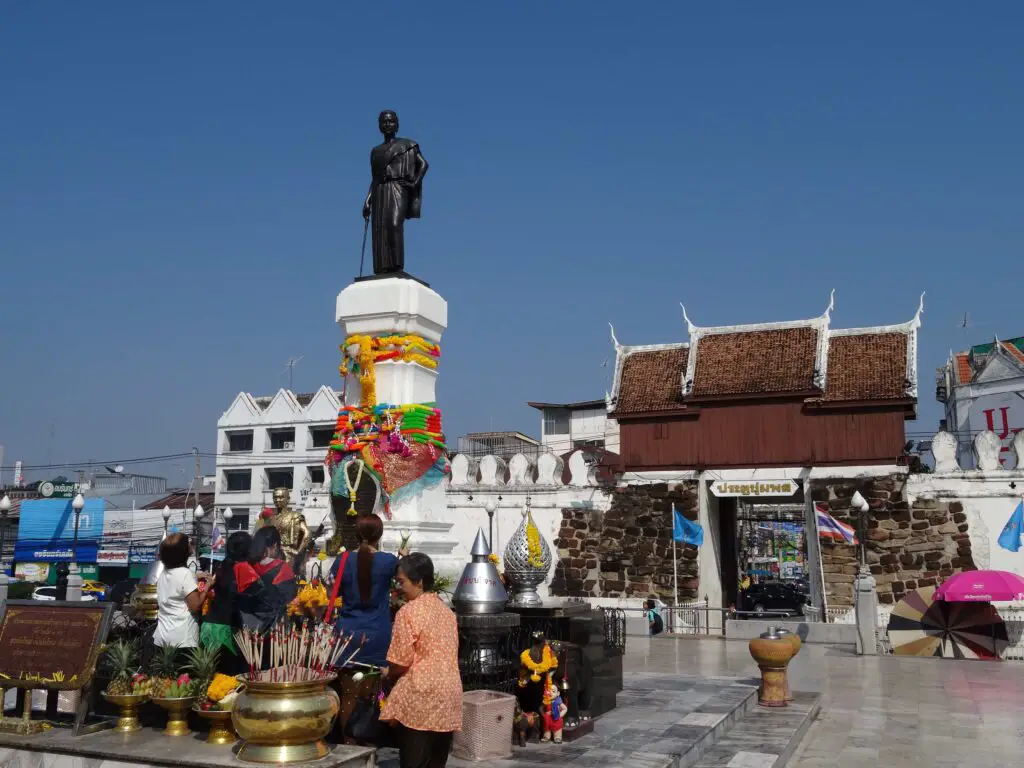
She’s very popular locally, and someone always seems to place flowers or incense at the foot of the statue. The small pedestrian zone stretching north and south along the former moat is a nice place for a stroll.
Suranari Hall
If you follow the small park along the former moat to the north from the Monument, you’ll come across Suranari Hall sitting attractively beside a reflecting pool.
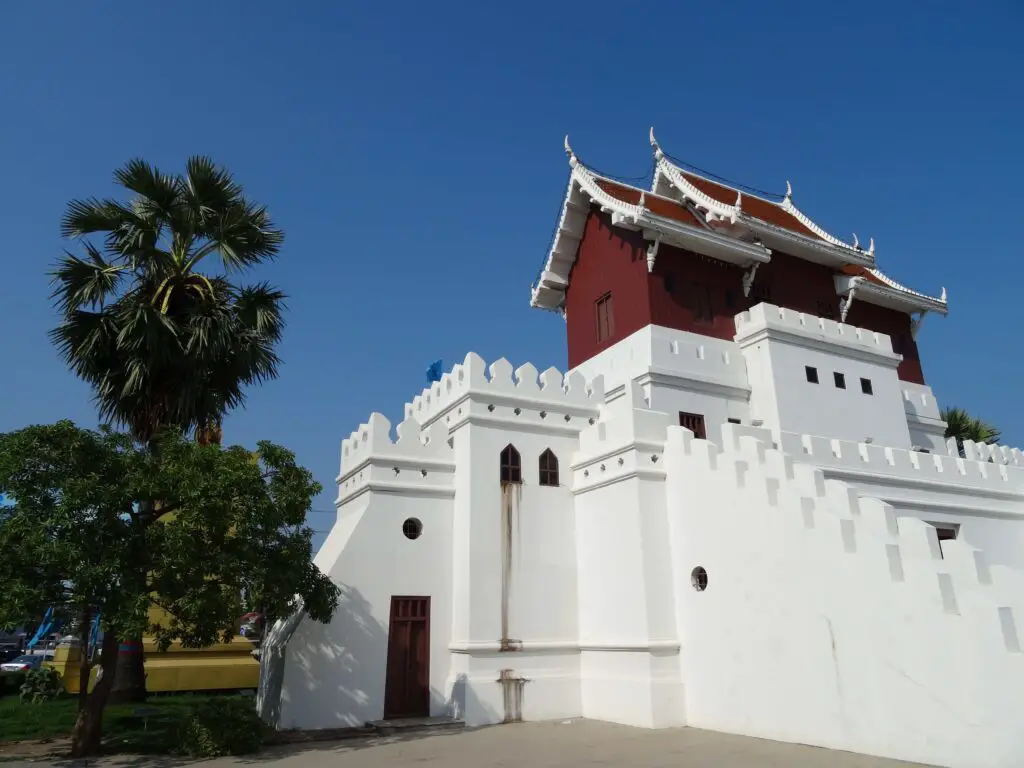
Inside you’ll find both a big relief and a graphic diorama of the revolt instigated by Thao Suranari (lots of bodies with spears sticking out of the back).
Maha Weerawong Museum
This smallish museum at the southwestern edge of the old town displays a huge number of historical sculptures (perhaps unsurprisingly, most of these are images of the Buddha in various forms). Apart from that, you’ll find an array of paintings, traditional textiles and prehistoric pottery.
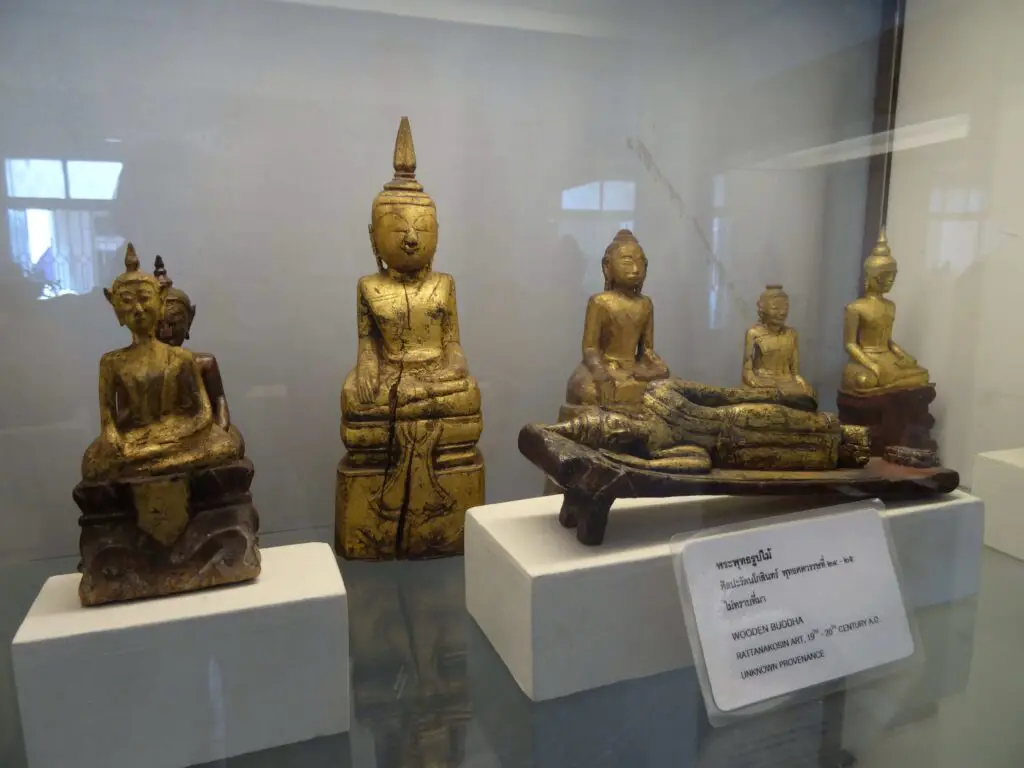
There are also some artefacts from Wat Thammachak Semaram in nearby Sung Noen (see below). The museum is open Wednesday until Sunday from 9AM to 4PM. The entrance fee is 50฿.
Wat Phra Narai Maharat
This temple complex in the centre of the old town sits on an island in a small lake populated by huge Monitor Lizards. It’s most famous for its highly venerated Vishnu image.
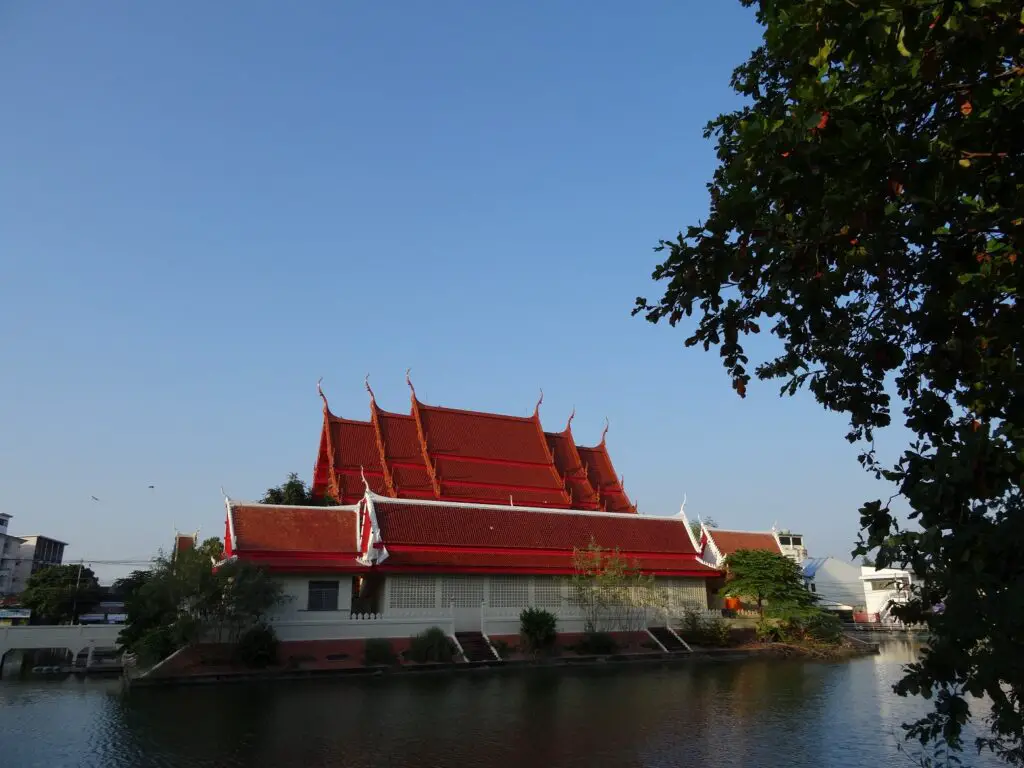
I had a nice chat with the monks here, who were thrilled to talk to a foreigner – Travelers really are in short supply in this corner of Thailand, I guess.
Wat Sala Loi
This big temple complex can be found to the north-east of the city centre and features as slender, modern Ubosot (ordination hall). The walls are decorated by clay tiles from Dan Kwian, which tell the life of the Buddha.
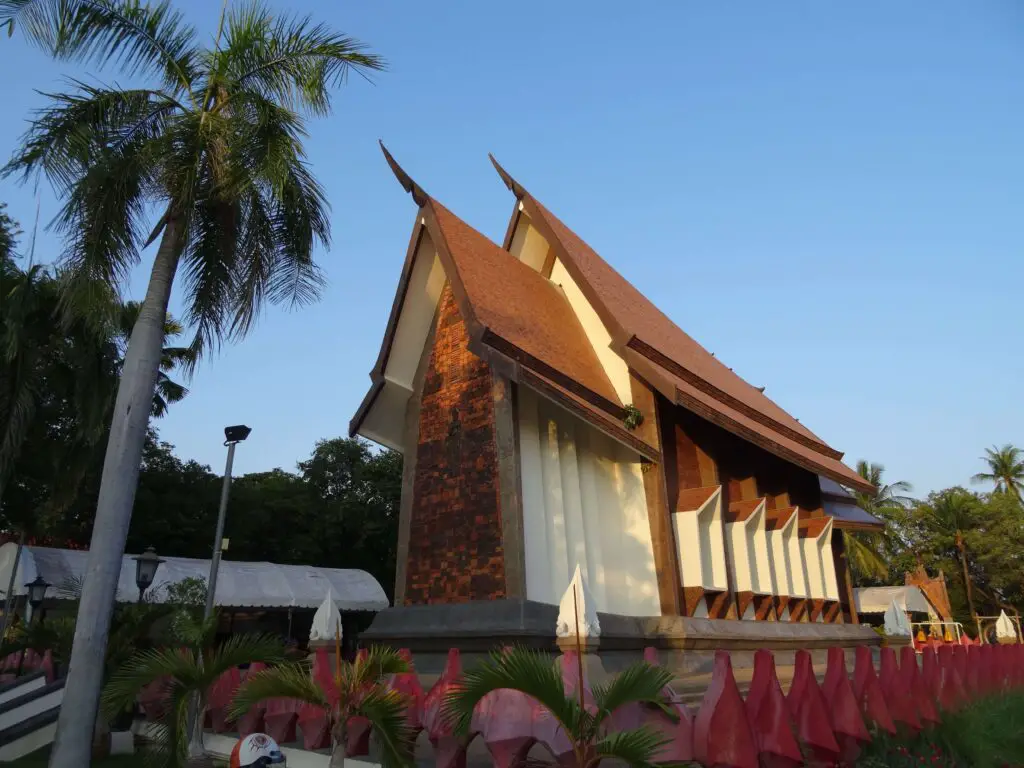
The complex was supposedly built by Thao Suranari and her husband in the first half of the 19th century, and there is a small Chedi said to contain the local heroine’s ashes as well as a gilded statue of Thao Suranari kneeling in prayer.
Wat Phayap
This unusual temple features a room completely covered in Stalactites, which were apparently taken from the remains of a destroyed nearby cave. Many Buddha images are squeezed in the nooks and crannies in between the reassembled rocks.
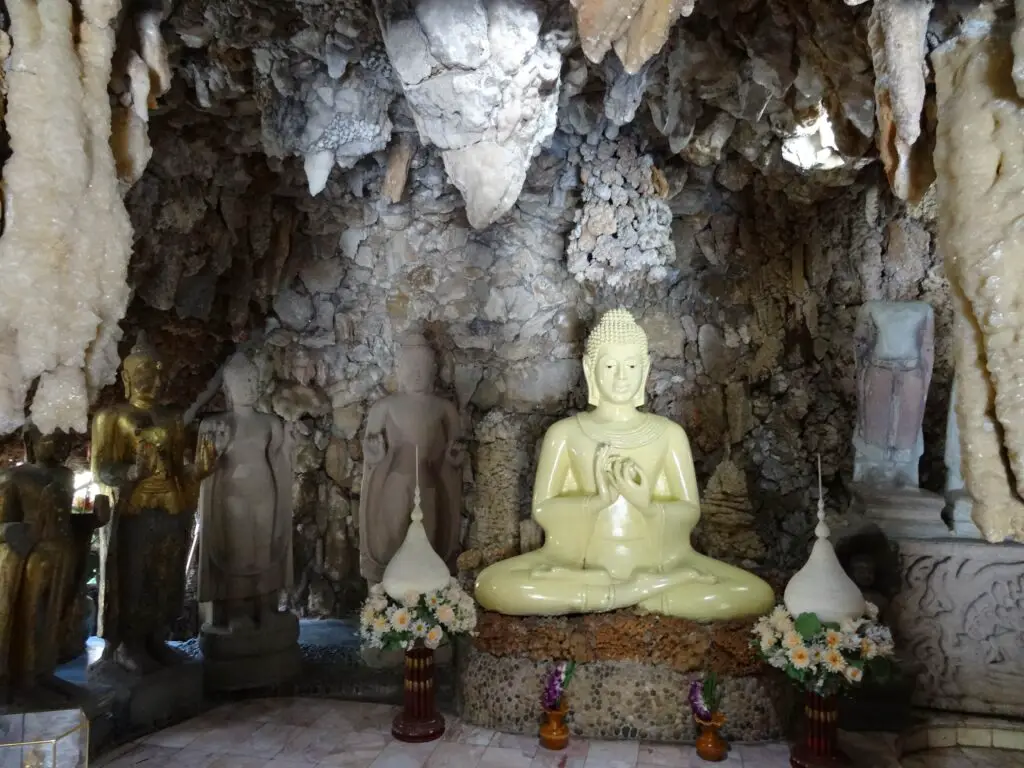
Wat Phayap can be found in the northwestern corner of the old town.
Try Pat Mee Khorat
The Khorat Province has its very own regional version of Pat Tai. It’s based on noodles made from regular rice (instead of the sticky version used for Pat Thai) and mixed with black soy sauce, garlic, lots of chili and topped with a fried egg.
As much as I like Pat Tai, I have to say that I found Pat Mee Khorat to be superior – it’s certainly spicier. You can get it in most restaurants in Khorat, just ask around.
Visit the Khmer Ruins at Phimai
The town of Phimai near Nakhon Ratchasima is home to a magnificent Khmer Temple dating to the 11th and 12th century. As an example of classical Khmer architecture, it features intricately carved architectural features, while many images of Hindu and Buddhist deities decorate the walls.
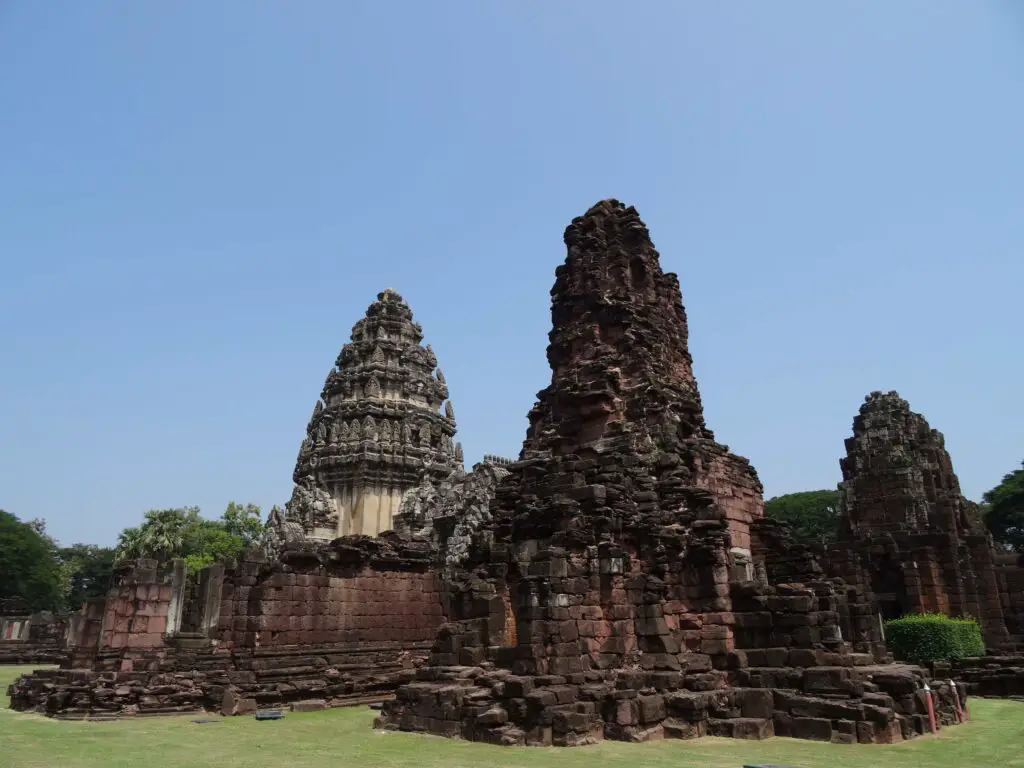
Phimai can be reached from Khorat’s New Bus Terminal in about 1.5 hours. Check out my dedicated guide to visiting Phimai here.
Check out the reclining Buddha in Sung Noen
At Wat Thammachak Semaram in Sung Noen village, you’ll find a reclining Buddha Image rumored to date to the Dvaraviti Era in the 7th century, which would make it the oldest reclining Buddha in Thailand.
The nearby archaeological site of Mueang Sema features a number of stone platforms and walled foundations of various temples similarly dating to the Dvaraviti Era.

Regional buses from the Old Bus Terminal stop in Sung Noen, from where it’s still about 5 km/3mi. to the temple and archaeological site (roughly to the north-west). There doesn’t seem to be any public transport and taxis are in short supply, too.
Your best bet might be hitch-hiking – I managed to get a ride on a motorcycle both ways. Walking would take about an hour.
Visit Dan Kwian Pottery Village
If you’re interested in traditional handicrafts, Dan Kwian in Chok Chai District is the place to go. Don’t be deterred by the tacky sculptures along the highway, because once you turn into the little alleyways of the village you will find the artisans at work.
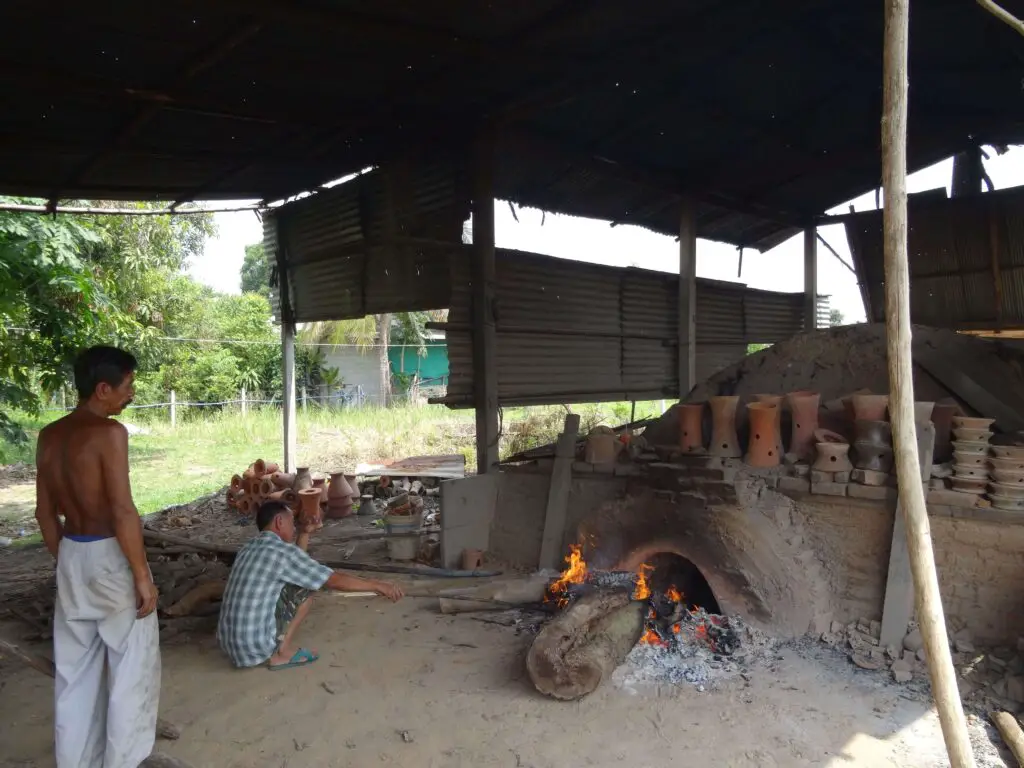
You can have a chat with them and watch them form pottery vessels and statues (using casts) and burn the forms in huge kilns. It’s quite interesting, even if you’re not planning to buy anything. You can reach Dan Kwian in about 20 minutes by Minibus from the southern gate in Khorat.
Map of Nakhon Ratchasima
Most of the sights in the city that I’ve mentioned above can be found in this map. Have a look:
Practicalities
How to get to Nakhon Ratchasima
As the gateway between the Isan Region and the Central Part of Thailand, Khorat is a bit of a traffic hub with two bus stations and two train stations. The Old Bus Terminal west of the city centre is the place to go for local buses around Nakhon Ratchasima Province and first class buses to Bangkok.
The New Terminal is a bit further afield north of the centre along Mittraphap Road and has buses to Bangkok (approx. 250฿/3.5 hours) and many other destinations all over the country (including direct connections to Chiang Mai, Ayuthaya and many places in the Isan Region). You can walk to the terminal or take a Tuk-Tuk/Motorcycle Taxi from the centre.
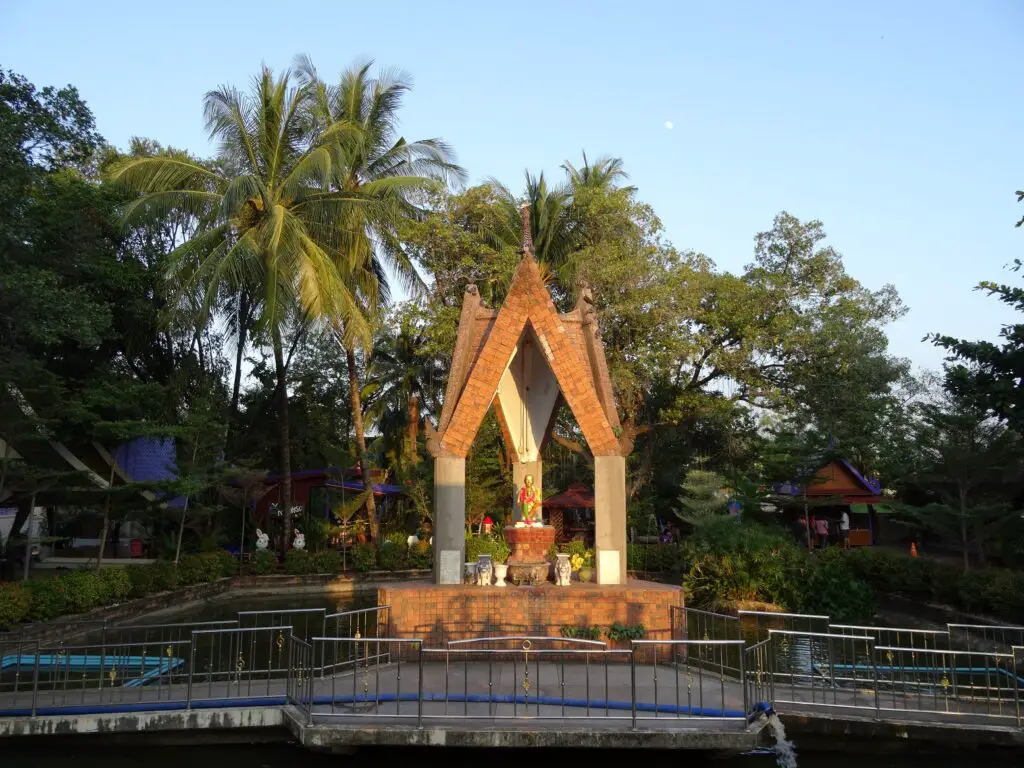
The train station sits about 1.5km/1mi. West of the centre has slower connections to Bangkok, Ayutthaya and some other places in the area, like Ubon Ratchathani. Trains are cheaper (starting at 50฿ for Bangkok) and more scenic, but also take a lot longer (about 6 hours to Bangkok), so I’d only recommend them if you have time to spare. Some trains also stop at the city train station at the south-western corner of the old town.
Where to Stay in Nakhon Ratchasima
I stayed at Sansabai House west of the centre near the old bus terminal, which I found to be excellent value for the comparatively low prices.
There are plenty of other cheapish options around as well as some mid-range places. Among the latter, Romyen Garden Palace has a good reputation. Take a peek at the map above for more options.
Where to eat in Nakhon Ratchasima
If you’re on a tight budget, there are some places selling Gai Yang – the popular Isan-Style grilled chicken – along Thanon Rajadamnern near the Chumphon Gate. I tried it at Gai Yang Saang Thai, but that’s just one place of many. Otherwise, just try any small restaurant for inexpensive Pat Thai and the like. Make sure to try the regional Pat Mee Khorat (see above).
Where to go next
Bangkok, Thailand’s exciting Capital
Chanthaburi, Eastern Thailand’s City of Gems
Surin, a pretty small town with a long history of elephant-handling
